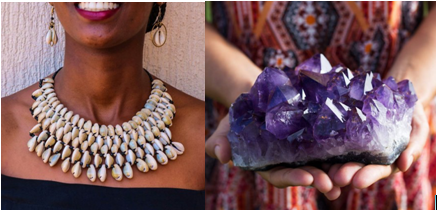Jewellery
is the art of depicting your inheritance, culture, ethnicity and origin.
Ornaments have been an integral part of the history of every country. Jewellery
is necessary on special occasions like engagements, weddings, birth ceremonies
or even death ceremonies in some parts of the globe.
Our
ancestors were true artisans when it comes to jewellery making. They have
carved unnatural and mesmerizing designs on stones, metals without any modern
machinery or facility.
The idea of jewellery making is not confined to just beautiful designs, these jewellery pieces are linked to some particular occasion or hold some meaning to them. Every country has some specific antique designs which can be differentiated from any other jewellery based on their carving and style.
Let’s discuss some marvellous vintage traditional jewellery around the globe.
1. Afghanistan: Kuchi/Nomadic Jewellery
Afghans
were culturally rich people who wandered from Afghanistan to the Pakistan
region. These tribal people called Kuchis hold a luxuriant, colourful store of
nomadic jewellery for more than 3000 years.
There was no specific source of metals for jewellery, therefore, Kuchi women used to make jewellery by using old coins, melting the metals and using the gemstones. They used to do it all by hand. The antique designs are the results of glass and enamel carving. These exotic designs have made a lot of buzz among the millennials recently.
2. United Kingdom: Scepter, Mace, Imperial Crown State etc.
The United Kingdom holds the exuberant traditional jewellery used to date at various formal occasions. The former kings and queens used to wear crowns embellished with big valuable stones and metals. The scepter is a rod of some expensive metals ornamented with stones. This was used to define the sovereignty and royalty of the person holding it. Similarly, mace signified the authority of house representatives. It was placed at the center of the table during meetings and law makings.
3. Uruguay: Shells and Amethyst Jewellery
Uruguay is
renowned for its shell jewellery making. The antique handmade shell jewellery
is loved by people all around the world. The authentic quality of shells and
their custom made designs make them stand out.
Read also, The Complete Guide to Polishing Old Jewelry and Making Them New Again
Amethyst is a purple coloured gemstone found in Uruguay Artigas. The country is well known for producing the best quality amethyst stone. The rings, earrings, pendants made out of this gemstone are acclaimed to hold some mythological and religious history. Many people consider it as a symbol of serenity, purification and calming energy.
4. Kenya: Beads, Piercings, Necklaces
The African
tribal people are the ones still holding on to their rich traditional culture
even in the 21st century. These tribal people love to flaunt their heritage
through appearance mostly. Body piercing, tattoos, and braided hair are some
specific characteristics of Kenyan people.
As it comes to jewellery, Beads are prominently used in their jewellery making. The heavy necklaces and multiple ear piercing are common among both the genders. The colouful beads and threads are used for making rings, bracelets , anklets and head gears.
5. China: Jade, Feng-guan and Amulets
Imperial
green jade is considered one of the rarest and the most expensive gems in the
world. The antique jade was worn by kings and noblemen in ancient china. It was
best known for its durability, hardness, magical qualities, purity and moral
integrity.
Amulets or
china are worn frequently as a charm to attract wealth and abundance. In
ancient times, Chinese people used to wear precious metals or coins with a hold
as a sign of prosperity. These vintage amulets had different carvings with
specific meaning to them. Some of them are meant for good health, good luck,
peace and harmony.
Feng Guan was a royal crown worn by an ancient Chinese empress. This headgear literally meant Phoenix crown. The empress used to wear it on ceremonial occasions back then.
6. Africa: Stones, Shells, Ivory, Bone and Amber Jewellery
African
people celebrate their lives with simplicity yet happily. Their jewellery may
not contain colourful gemstones or metals but these vintage jewellery pieces
are worth millions. The Africans are fine artisans that carve jewellery out of
ivory, bones, stones and shells.
The quality and designs of these antique pieces are remarkable. Their handmade craft makes it desirable for travelers and people who love the diversity in their jewellery boxes.
7. India: Tikka, Mangalsutra, Bangles, Payal etc.
India is
famous for its colourful festivals, religious ceremonies and traditions. No
ceremony is complete without ornaments. The Indian women wear jewellery daily.
For
example, the Mangalsutra is a chain worn by Indian women after marriage. It
signifies their marital status. Tikka is a kind of headgear mainly worn during
weddings or special family celebrations.
Bangles are made from glass to gold. Whereas, Payals is an anklet worn on both pairs of feet. There is a long list of antique jewellery designs in India due to its diverse cultural heritage.
8. Canada: Diamonds jewellery
Canadian people originate from South American, Latin or African immigrants. Their traditions and cultural legacy is a mixture of both worlds. The jewellery is however not so specific considering their mixed cultures. With increasing English and Punjabi and Chinese people they are more likely to wear diamond engagement rings, wedding bands and other jewellery or something traditional according to their rituals.









